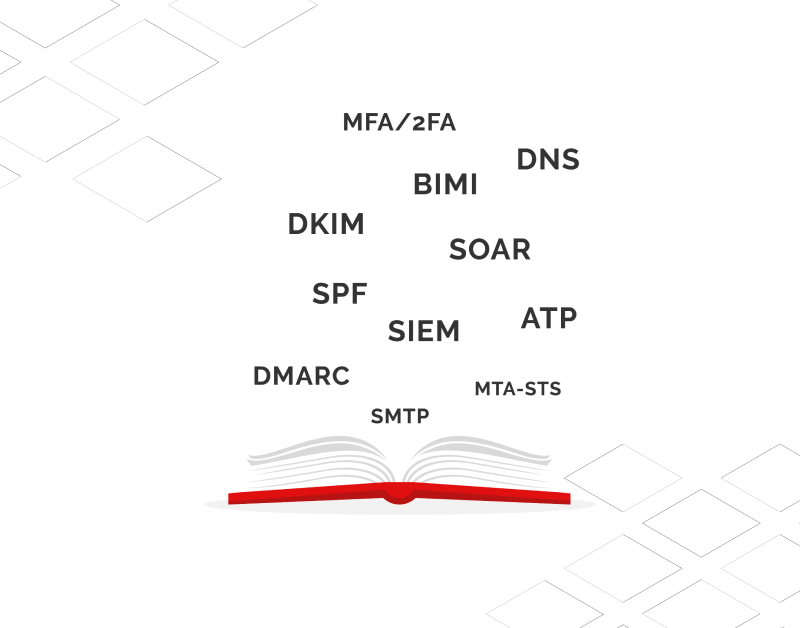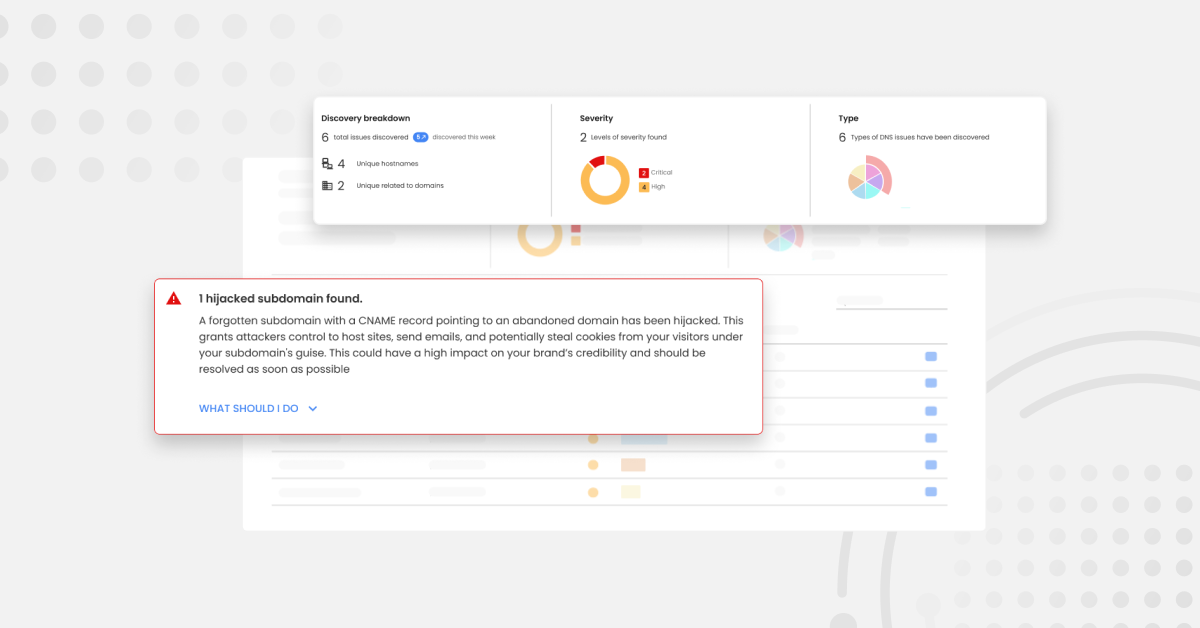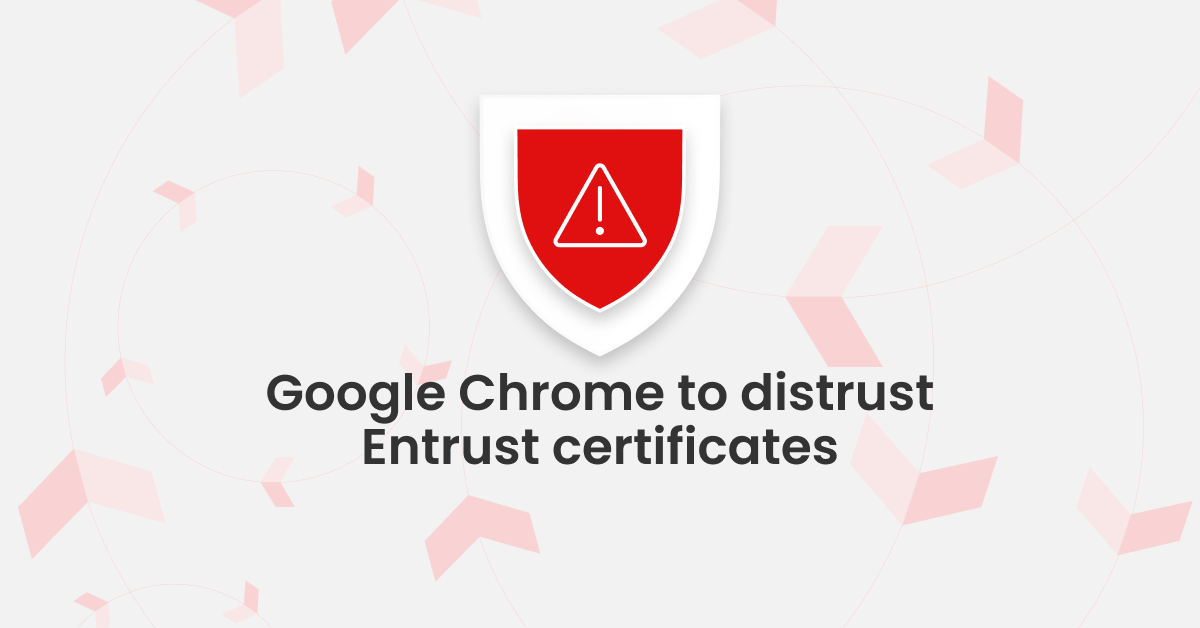Email security is crucial to shield your business reputation, and you must deploy the necessary measures to stay abreast of cybercriminals. This extensive domain guide contains many terms that you may need an understanding of. We’ve created a comprehensive list of such acronyms. Scroll down to see how many of these you already knew.
ATP
ATP is an acronym for Advanced Threat Prevention, a group of tools developed to protect against cyber threats that use known and unknown attack vendors. Advanced threats invade a network or device and covertly remain there for months or even years. They aim to exfiltrate bulk data, conduct espionage, or cause other damage. ATP safeguards data centers against menaces designed to bypass standard security tools.
BIMI
BIMI is an acronym for Brand Indicators for Message Authentication, a new email security standard that affixes your company’s logo to all emails sent from your domain. This gives domain owners control of their officially trademarked logos and ensures they are consistently maintained across inbound emails. BIMI fosters brand loyalty by building up a sense of trust and reliability for your customers and prospects.

DKIM
DKIM is an acronym for DomainKeys Identified Mail, a popular email security protocol that works on the concept of cryptography. When you create a DKIM record and publish it to your DNS, a pair of public and private keys are issued for your domain. The public key is openly accessible while the private key is signed by the sending email service. The DKIM selector indicates where a receiving mail server can find your domain’s public key.
The DKIM protocol signs email headers in a way that receiving mailbox providers can verify. Once an email is sent, both public and private keys are matched, if the match is successful, the DKIM check passes, otherwise, it fails.
DMARC
DMARC is an acronym for Domain-based Message Authentication, Reporting & Conformance. It works in conjunction with SPF and/or DKIM by setting a DMARC policy that instructs how recipients’ mailboxes should handle emails failing SPF and/or DKIM checks. You can choose to take no action, mark them as spam, or completely reject their entry.

DNS
DNS is an acronym for Domain Name System, the internet’s phonebook. You enter domain names in your browser’s search box to visit a webpage. DNS is responsible for finding IP addresses corresponding to those domain names to direct you to the desired websites or webpages. Each device with an active internet connection has a unique alphanumeric IP address which is used by other machines to locate it. DNS eliminates the need of memorizing these complex IP addresses.
A DNS checker or DNS propagation tool is used to check a domain name’s current IP address and DNS record details against several nameservers spread across the world.
MFA/2FA
MFA is an acronym for Multi-factor Authentication and 2FA stands for 2-Factor Authentication. These are authentication methods for adding another layer of security apart from a username and password to accounts and devices. This is done using biometric features like fingerprints or voice recognition, OTPs, answers to personal security questions, etc.
MFA and 2FA are sometimes used interchangeably, but they are slightly different. 2FA means only two factors are required for authentication whereas with MFA you can have multiple.

MX Record
MX is an acronym for Mail Exchange. An MX Record directs emails to mail servers. It specifies how to route emails in compliance with SMTP. An MX record is composed of two parts: the priority and the mail server name. The lowest priority value is more preferred.
Without this record, you won’t be able to receive emails. It’s also crucial to have for an error-free receiving mail service.
MTA-STS
MTA-STS is an acronym for Mail Transfer Agent Strict Transport Security, a standard for the secure movement of emails over an encrypted SMTP connection. A Mail Transfer Agent is a program that helps the transmission of messages between computer devices with active internet connections. Strict Transport Security helps deploy and implement the standard.
Together MTA-STS permits an SMTP client to check server identity and evaluate if it’s linked to an impostor by requiring the server to provide its certificate fingerprint in the TLS handshake. Then the client verifies the shared certificate against a trust store having certificates of familiar servers.

SIEM
SIEM is an acronym for Security Information and Event Management, an email security approach that is an amalgamation of security information management (SIM) and security event management (SEM). The SIEM approach collects data from different sources, looks for deviations from the norm, and initiates the necessary activity.
SMTP
SMTP is an acronym for Simple Mail Transfer Protocol which is a set of communication guidelines that helps software in sending emails over a secured internet connection. The servers can locate themselves and announce what sort of communication they are attempting. SMTP servers also take care of errors including incorrect recipients’ email addresses.
SOAR
SOAR is an acronym for Security Orchestration, Automation, and Response. It’s an aggregation of software solutions and tools that let companies streamline security operations in three primary domains: threat and vulnerability management, incident response, and security operations automation.
SOAR automates security operations-related tasks like detecting system vulnerabilities and browsing logs. It resolves the issue of finding and managing vast human resources while ensuring fast and error-free work.
SPF
SPF is an acronym for Sender Policy Framework, an email security protocol that requires you to create a list of IP addresses and servers allowed to send emails using your domain name. Emails sent from IP addresses outside of the list fail authentication checks.
SPF helps prevent phishing and impersonation attacks attempted in your brand’s name to manipulate recipients into sharing confidential and sensitive information. You can use our Investigate tool to ensure error-free SPF, DKIM, and DMARC records. All you have to do is send us an email from the domain you want to check and we’ll get back to you with results.

Strengthen your Email Resilience against Phishing Attacks
Discover how you can improve your email security and harden your attack surface against threats with the Red Sift Platform.





